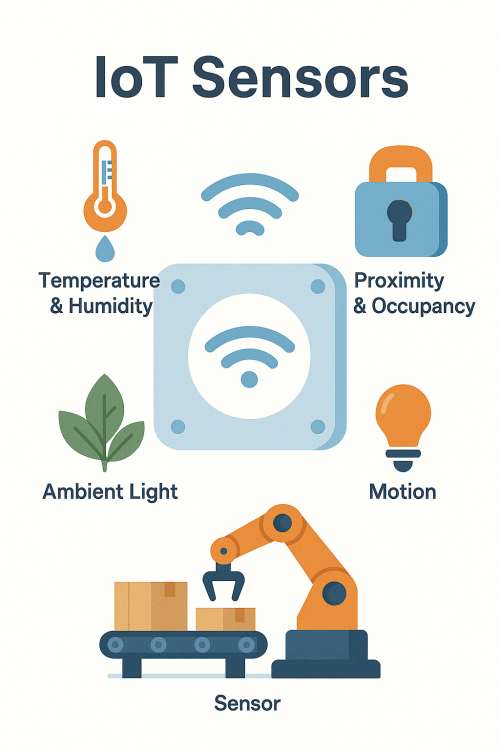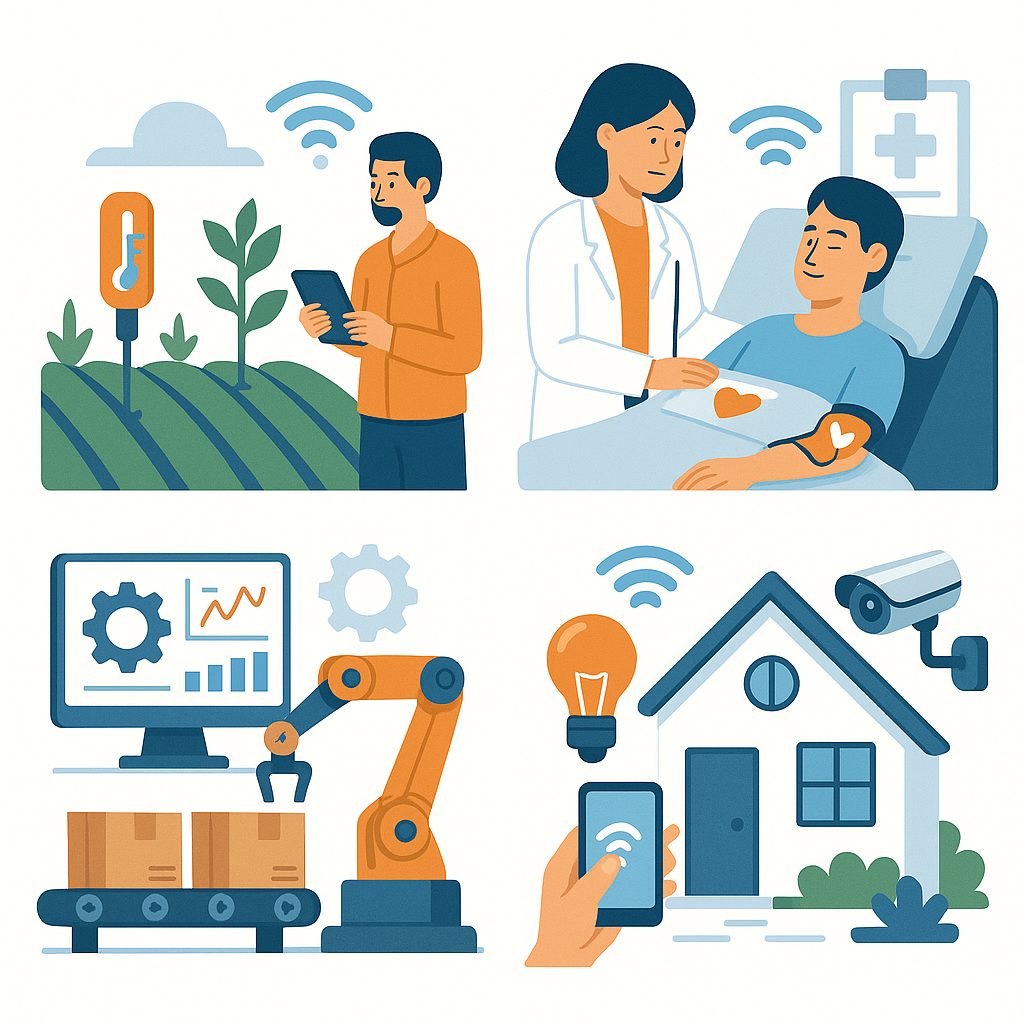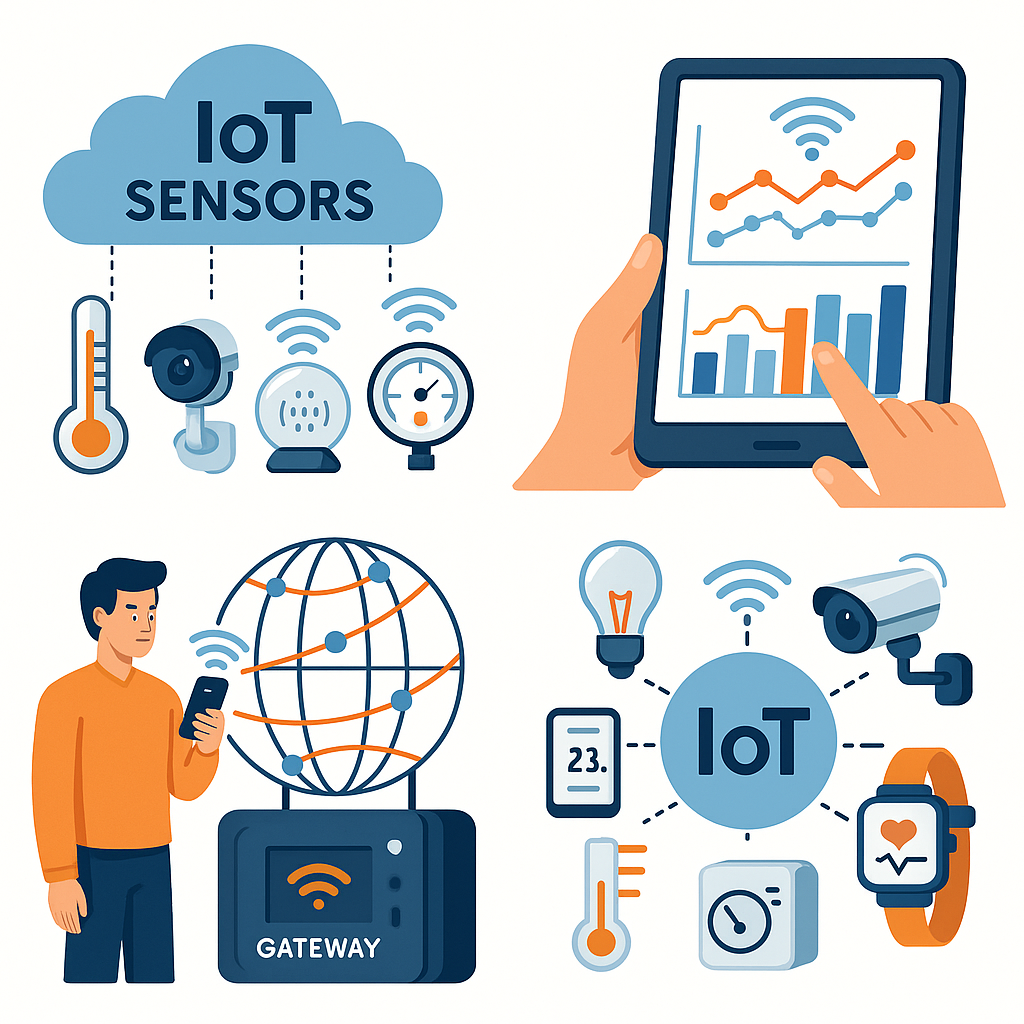IoT Sensors
- Home
- IoT Sensors

🌐 Why IoT Sensors Matter
In a connected world, IoT sensors bridge the gap between the physical and digital. From smart homes to precision agriculture, and from industrial automation to environmental monitoring, IoT sensors drive innovation and efficiency.
Benefits of Using IoT Sensors:
- Real-time data collection and alerts
- Enhanced automation and control
- Reduced operational costs
- Predictive maintenance and analytics
-
Scalable for small to industrial deployments

⚡ Types of IoT Sensors
-
Temperature Sensors – Monitor temperature changes in HVAC, agriculture, and manufacturing.
- Humidity Sensors – Used in climate control systems, greenhouses, and storage facilities.
- Pressure Sensors – Essential in fluid systems, aerospace, and medical devices.
- Proximity Sensors – Detect object presence or absence in retail, automation, and robotics.
- Gas Sensors – Monitor gases like CO2, CH4, VOCs in industrial and indoor air quality systems.
- Motion Sensors – Used for security, automation, and human detection.
- Light Sensors – Control lighting systems and measure ambient light levels.
- Soil Sensors – Critical in smart agriculture to monitor moisture, pH, and nutrients.
- Noise Sensors – Monitor the noise levels in your industrial manufacturing setup.
- HVAC Sensors
- Environmental Sensors
- Agricultural Sensors
- Industry4.0 Sensors
- Smart Health Sensors
- Water Quality Sensors
- Level Sensors
- Flow Sensors

🔌 How IoT Sensors Work
IoT Sensors collect data and transmit it through wired or wireless protocols like Wi-Fi, GSM, LoRa, Bluetooth, Modbus or NB-IoT. The data is then sent to cloud platforms or edge devices for processing, visualization, and decision-making.
Typical Architecture:
-
Sensor Node → Microcontroller/Gateway → Cloud/Edge Platform → Dashboard or Control Action

🌍 Industries Using IoT Sensors
| Industry | Application |
|---|---|
| Agriculture | Soil, weather, and irrigation monitoring |
| Healthcare | Patient vital tracking, cold chain supply |
| Manufacturing | Predictive maintenance, asset tracking |
| Smart Cities | Traffic, pollution, noise monitoring |
| Energy | Grid monitoring, smart metering |
| Logistics | Fleet tracking, temperature monitoring |
| Retail | Inventory, footfall analysis |
📊 Market Trends & Growth
The global IoT sensor market is projected to exceed $40 billion by 2027, driven by demand in automation, smart cities, and environmental monitoring. With 4G/5G and AI integration, IoT sensors are becoming more accurate, power-efficient, and cost-effective.
✅ Why Choose Our IoT Sensor Solutions?
-
Plug-and-play hardware with long battery life
- Compatible with major cloud platforms (AWS, Azure, Google Cloud)
- Real-time alerts and historical analytics
- Custom sensor kits for agriculture, industry, or R&D
-
India & global shipping with expert tech support
Ready to build your smart ecosystem? Start with our trusted, field-tested IoT sensors.




